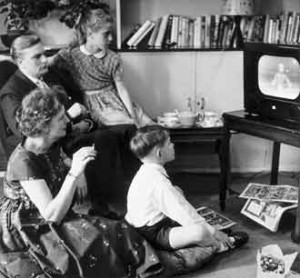 Richard Lutz points you to the best film on the box this week. It’s a post war thriller reeking of danger.
Richard Lutz points you to the best film on the box this week. It’s a post war thriller reeking of danger.
King Kong hanging from The Empire State Building, Marilyn with her skirt awhirl standing over a hot air vent, Sean Connery with that martini and gun, Brando in leather sloping over his motorcycle, Gloria Swanson swooning down a staircase in Sunset Boulevard.
Iconic movie images all.
Well, here’s another: The coy cynical smile of Orson Welles as his face ducks out of the shadows in The Third Man (Thur, 11.20am, More4).
This is Brit noir at its best, a marked contrast to the black and white cheeky chappy Ealing comedies produced just after the war and into the early fifties that also set the bar high.
This is Europe still struggling in the dying gasp of the war’s horror, still dangerous, still unsure of its own landscape. Still mutable.
Welles was considered box office poison and producer David O Selznick, high on speed for much of the 1949 production, wanted Cary Grant. Director Carol Reed held his ground, Welles was hired, disappeared many times during shoots and reportedly chucked some of the script and ad-libbed many of his own lines.
The end result is a high quality mystery crime thriller about bad guy Harry Lime (Welles) running a black market penicillin racket in divided up Vienna. There’s a love story, a night time police chase through the real and stark ruins of the Austrian city and that scamper through the sewers- a montage of dark locations that Welles avoided. The figure you see actually running through the underground waters is assistant director Guy Hamilton, later to do an 007 movie or two in his latter career.
The script is by Graham Greene who, in his autobiographies, alludes to the ‘light entertainment’ of writing the script in tandem with Welles. It was never a novel. As per Greene, it is writing at its best.
Some nice touches: Joseph Cotton as the grumbling burned out hack Holly Martins trying to trace arch-crook Harry Lime, Trevor Howard as the solid military cop desperate to stop the illicit and fatal drug trade arranged by Lime.
Welles’ character is one of the first of modern anti heroes. You hate him. But love him. You are enraged he is selling dicey penicillin that will kill patients. But your eye just has to follow him. As his Harry Lime runs through the Viennese sewer, you’re not too sure if you want him caught or not.
It is Welles’ greatest role and he did well to walk the fine line between American starchy morality that always had to have a good and bad guy and British film making which valued the shadows of stories and used them with great angular effect.
And, of course, there’s that zither music and the stark photography of a fractured city dead on its ruined feet.



I haven’t seen the film for 30 years and it came right back to me…